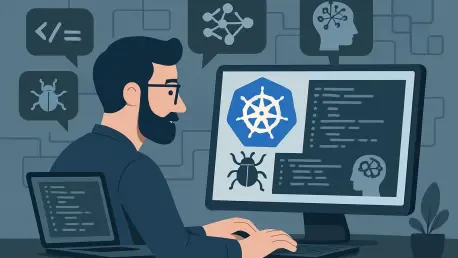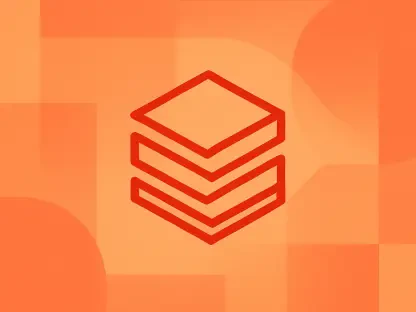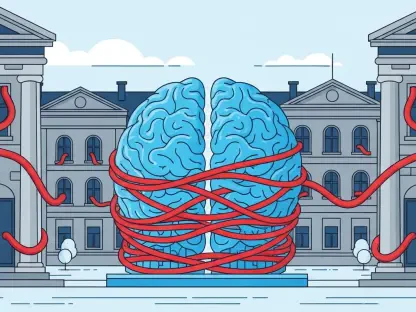In the fast-evolving landscape of container orchestration, Kubernetes stands as a cornerstone for managing complex, distributed systems at scale, yet it presents unique challenges when pods fail unexpectedly, often leaving engineers grappling with intricate issues. Debugging these problems can feel like navigating a maze of cryptic logs, obscure events, and hidden dependencies, making it difficult even for experienced professionals to find clarity. The abstraction that makes Kubernetes powerful also masks the root causes of issues, turning troubleshooting into a daunting task. This article offers a structured, data-driven approach to diagnosing pod issues, blending traditional command-line techniques with cutting-edge AI tools to not only resolve current failures but also prevent future disruptions. Key focus areas include systematic triage of pod and node issues, integration of ephemeral and sidecar debugging methods, application of machine learning for anomaly detection, AI-assisted root cause analysis (RCA), and the design of predictive autoscaling with compliance-safe observability. By combining human expertise with intelligent automation, this guide aims to transform debugging from a reactive chore into a proactive strategy.
1. Examining Pods and Events for Initial Insights
Gathering structured evidence is the critical first step in debugging Kubernetes pods, providing a foundation before introducing automation or AI-driven solutions. Start by using essential commands to retrieve detailed pod status and event logs. Focus on interpreting container state transitions such as Waiting, Running, and Terminated, while looking for patterns in event timestamps that correlate with restarts—often a sign of resource exhaustion. Key data points like ExitCode, Reason fields, and restart counts should be meticulously recorded to build a clear picture of the issue. This manual process ensures that no critical detail is overlooked, forming a baseline for deeper analysis. By prioritizing structured data collection, engineers can avoid the pitfalls of jumping to conclusions too early and ensure a methodical approach to diagnosis.
AI tools can significantly enhance this initial phase by accelerating root cause identification and providing valuable insights. Feeding logs and event summaries into advanced models like GPT-4 or Claude allows for rapid analysis of complex issues such as CrashLoopBackOff. These tools can summarize likely causes and suggest the next diagnostic steps, shifting the focus from tedious log hunting to targeted resolution. This integration not only saves time but also introduces a layer of precision that manual efforts might miss. The ability of AI to process vast amounts of data quickly means patterns invisible to the human eye can be detected, providing actionable insights. As a result, teams can move faster from problem identification to implementing effective fixes, streamlining the debugging workflow.
2. Using Temporary Containers for Real-Time Troubleshooting
Temporary containers offer a powerful solution for live debugging without the risk of altering the base image, which is a critical consideration in production environments. By executing specific commands, engineers can access a temporary shell within the pod to perform immediate diagnostics. Inside this environment, key checks include reviewing environment variables with env | sort, inspecting storage mounts using df -h && mount | grep app, testing DNS resolution via cat /etc/resolv.conf && nslookup google.com, and validating network connectivity with curl -I https://. This hands-on approach allows for direct observation of the pod’s internal state, uncovering issues that logs alone might not reveal. Such real-time analysis is invaluable for pinpointing transient problems that disappear upon restart or redeployment.
To maximize the value of these sessions, AI tools can play a supporting role by automating documentation. Submitting logs from temporary container sessions to an AI summarizer enables automatic recording of troubleshooting steps for incident management systems, creating a reusable knowledge base that benefits future debugging efforts and ensures consistency across teams. Beyond documentation, AI can highlight subtle anomalies in the logs that might be overlooked during manual review, adding an extra layer of insight. This synergy between ephemeral debugging and AI assistance transforms isolated troubleshooting into a collaborative, scalable process, ensuring that lessons learned are captured and applied effectively in subsequent incidents.
3. Deploying a Debugging Sidecar for Ongoing Analysis
In environments where temporary containers are unsupported, such as OpenShift or older Kubernetes clusters, adding a sidecar container provides a persistent debugging solution that can be invaluable for developers and system administrators. Defined through YAML configurations, sidecars can be tailored to specific needs, enabling continuous monitoring without disrupting the primary workload. Common applications include capturing network packets with tcpdump, verifying DNS and latency using dig and curl, and supporting ongoing observability in CI pipelines. This method ensures that diagnostic capabilities are embedded directly within the pod, offering a reliable alternative for complex or restricted setups. At enterprise scale, sidecars are often deployed only in non-production namespaces to adhere to compliance requirements, balancing utility with security.
The persistent nature of sidecars makes them ideal for long-term analysis, allowing teams to monitor behavior over extended periods and catch intermittent issues that might otherwise be missed. Unlike temporary containers, which are short-lived, sidecars provide a stable platform for collecting data under real-world conditions, revealing trends that could easily go unnoticed. Their integration into the pod’s lifecycle means diagnostics can run alongside production workloads without interruption, offering a seamless debugging experience. When paired with automated logging tools, sidecars can feed data into centralized systems for further analysis, ensuring no critical information is lost. This approach is particularly effective in large-scale tech environments where maintaining operational continuity is paramount.
4. Conducting Node-Level Investigation for Deeper Issues
Pod failures often originate from underlying node instability, making node-level diagnosis a crucial step in the debugging process. By using targeted commands, it’s possible to inspect node health and identify issues such as resource constraints like MemoryPressure or DiskPressure. Other focus areas include kernel throttling, network plugin (CNI) daemonset failures, and container runtime errors involving systems like containerd or CRI-O. This level of investigation uncovers systemic problems that affect multiple pods, providing context that pod-specific logs might miss. A thorough node analysis ensures that the root cause, rather than just the symptom, is addressed, preventing recurring disruptions across the cluster.
Machine learning-based observability tools, such as Dynatrace Davis or Datadog Watchdog, add a powerful dimension to node-level debugging by automatically detecting anomalies. These tools can identify patterns like periodic I/O latency spikes and correlate them with affected pods, offering actionable recommendations. By leveraging AI, teams can move beyond manual log correlation to a more predictive understanding of node behavior, catching issues before they escalate. This proactive approach reduces downtime and enhances cluster reliability, especially in environments with high workloads. Integrating AI with traditional diagnostics creates a comprehensive strategy that tackles both immediate failures and long-term stability concerns.
5. Analyzing Storage and Volume Issues for Hidden Failures
Persistent Volume Claims (PVCs) can cause pod hangs without clear indicators, making storage analysis a vital part of debugging. Diagnostic workflows should include verifying mounts with appropriate commands, checking PVC binding status, confirming StorageClass settings, and ensuring node access modes like RWO or RWX are correctly configured. Additionally, reviewing node logs via dmesg for mount failures can reveal underlying issues with the storage subsystem. This meticulous approach ensures that storage-related problems, often silent in standard logs, are identified and addressed before they impact broader system performance. Overlooking these components can lead to cascading failures, making this step non-negotiable in a robust debugging process.
AI-driven anomaly detection models elevate storage diagnostics by isolating recurring I/O timeout errors across nodes. By clustering these patterns, such tools can signal early degradation in the storage subsystem, allowing for preemptive action. This capability is particularly valuable in large clusters where manual monitoring of every volume is impractical. The insights provided by AI not only pinpoint current issues but also help predict future bottlenecks, enabling better resource planning. Combining traditional storage checks with machine learning creates a dual-layered approach that maximizes both accuracy and foresight, ensuring data persistence layers remain stable under varying workloads.
6. Evaluating Resource Usage and Implementing Automation
Resource throttling is a common trigger for cascading pod restarts, necessitating careful monitoring and optimization to maintain system stability. Commands to assess CPU and memory usage provide critical insights into resource allocation, while fine-tuning requests and limits helps prevent overuse. Verifying scaling thresholds with kubectl get hpa ensures that horizontal pod autoscaling operates within expected parameters, and introducing custom metrics for queue depth or latency can further refine performance. These steps address immediate resource conflicts and lay the groundwork for sustainable cluster health. At an enterprise scale, automation isn’t just beneficial—it’s essential for maintaining resilience by design, preventing small issues from escalating into major outages.
Automation tools streamline resource management by dynamically adjusting allocations based on real-time data, reducing the risk of manual errors. When integrated with monitoring systems, these solutions provide continuous feedback on pod performance, allowing for rapid adjustments to changing demands. This proactive stance contrasts with reactive firefighting, offering a more stable environment for critical workloads. Furthermore, automated scaling ensures that resources are used efficiently, avoiding both underutilization and overprovisioning. By embedding automation into the debugging and optimization process, organizations can achieve a balance between performance and cost, ensuring that Kubernetes clusters operate at peak efficiency even under heavy load.
7. Enhancing Debugging with AI-Driven Pipelines
Artificial intelligence is revolutionizing DevOps by shifting the focus from reactive incident response to proactive insight generation, transforming how teams manage complex systems. Key applications include anomaly detection in telemetry streams, log summarization to extract critical signals from vast datasets, predictive scaling to forecast resource needs, and AI-assisted root cause analysis with ranked potential causes. These capabilities significantly reduce mean time to detection (MTTD) and mean time to recovery (MTTR), enabling faster resolution of issues. By harnessing AI, teams can process data at a scale and speed unattainable through manual methods, transforming how Kubernetes environments are managed and maintained.
The integration of AI pipelines into debugging workflows allows for a deeper understanding of cluster behavior, uncovering hidden correlations in metrics and logs that might otherwise go unnoticed. For instance, AI can identify outlier patterns that indicate impending failures, providing early warnings that manual analysis might miss. Additionally, summarization tools distill terabytes of log data into actionable insights, saving countless hours of manual review. Predictive models further enhance this by anticipating resource saturation, enabling preemptive scaling adjustments. Together, these AI-driven approaches create a comprehensive framework that not only resolves current issues but also builds resilience against future disruptions, redefining operational efficiency.
8. Implementing AI-Powered Root Cause Analysis (RCA)
Traditional root cause analysis often requires painstaking manual correlation across metrics and logs, a process that AI streamlines with remarkable efficiency. By clustering error signatures using unsupervised learning, applying attention models to link metrics like CPU, latency, and I/O, and ranking probable causes with confidence scores, AI delivers precise insights. Automated timeline summaries for incident reports further simplify postmortems. A typical workflow might involve storing telemetry in Elastic AIOps, running machine learning jobs for anomaly clustering, and using a language model to outline failure scenarios for export to tools like Jira or ServiceNow. This hybrid approach merges deterministic data with probabilistic reasoning, ideal for mission-critical systems.
The value of AI-powered Root Cause Analysis (RCA) lies in its ability to handle complexity at scale, processing disparate data sources to reveal underlying issues that manual methods might overlook, thereby enhancing problem-solving efficiency. For example, correlating seemingly unrelated spikes in latency and memory usage can uncover hidden dependencies causing pod failures. Additionally, the confidence scoring of potential causes helps prioritize troubleshooting efforts, ensuring focus on the most likely culprits. Automated summaries also enhance collaboration by providing clear, concise reports for cross-functional teams. By integrating AI into RCA, organizations can achieve faster resolutions and build a knowledge base of failure patterns, reducing the likelihood of repeat incidents in high-stakes environments.
9. Setting Up Predictive Autoscaling for Proactive Management
Unlike reactive scaling, which responds only after metrics breach thresholds, predictive autoscaling anticipates resource saturation to prevent performance degradation. Implementation involves gathering historical data on CPU, memory, and request metrics, training regression models to forecast usage in 15-minute windows, and integrating predictions with Kubernetes HPA or KEDA. Performance validation through synthetic benchmarks ensures accuracy. In large tech firms, this approach has been shown to reduce latency incidents by 25–30%, demonstrating its impact on operational stability. Predictive scaling addresses issues before they manifest, offering a forward-looking strategy for resource management in dynamic environments.
The benefits of predictive autoscaling extend beyond incident prevention to include cost efficiency and improved user experience. By accurately forecasting demand, clusters can allocate resources precisely, avoiding both overprovisioning and underutilization. This not only lowers infrastructure costs but also ensures applications remain responsive during peak loads. Furthermore, integrating predictive models with existing Kubernetes tools like HPA creates a seamless workflow that requires minimal manual intervention. Continuous validation through benchmarks keeps the system adaptable to changing workloads. This proactive methodology represents a significant leap forward in managing Kubernetes clusters, aligning resource allocation with actual needs.
10. Ensuring Compliance and Security in AI Debugging
AI-driven debugging pipelines must adhere to strict governance standards to protect sensitive data and maintain trust, ensuring that security protocols are robust and effective. Best practices include redacting credentials and secrets before log ingestion, using anonymization middleware for personal or transaction data, applying least privilege RBAC for AI components, and ensuring model storage complies with data residency regulations. Security in this context goes beyond access controls—it encompasses maintaining explainability in AI-assisted systems to ensure decisions are transparent and auditable. These measures are critical in regulated industries where data breaches or non-compliance can have severe consequences, making governance a top priority.
Beyond data protection, compliance in AI debugging involves aligning with organizational policies and legal frameworks, ensuring that automation does not compromise accountability. Transparency in AI decision-making builds confidence among stakeholders, allowing for scrutiny of automated recommendations. Additionally, strict access controls prevent unauthorized access to sensitive insights generated by AI tools, safeguarding intellectual property and operational details. Regular audits of data handling practices further reinforce compliance, identifying gaps before they become liabilities. By embedding security and governance into AI pipelines, organizations can leverage advanced debugging capabilities while mitigating risks, striking a balance between innovation and responsibility.
11. Addressing Common Failure Scenarios Systematically
Frequent Kubernetes issues, such as RBAC errors causing “Forbidden” messages, ImagePullBackOff due to registry secret mismatches, DNS timeouts from stale CoreDNS caches, volume mount failures with unbound PVCs, and restart loops from invalid environment variables, require systematic resolution. Each category of failure comes with specific symptoms, root causes, and fixes that can be documented for quick reference. AI correlation engines enhance this process by automating the linkage of symptoms to resolution recommendations in real time, reducing diagnostic delays. This structured approach ensures that common problems are addressed efficiently, minimizing downtime across clusters.
The automation of failure resolution through AI not only accelerates troubleshooting but also builds a repository of solutions that can be applied to similar incidents, ensuring quicker recovery in future scenarios. By analyzing historical data, these tools identify recurring patterns and suggest preemptive measures, such as updating configurations before issues arise. This predictive capability is particularly useful in large environments where manual tracking of every failure is impractical. Additionally, maintaining a categorized list of fixes fosters knowledge sharing among teams, ensuring consistency in handling routine problems. Leveraging AI to streamline these processes transforms common failures from persistent headaches into manageable tasks, enhancing overall system reliability.
12. Reviewing a Real-World Enterprise Case Study
In a practical scenario, a financial transaction service experienced repeated failures after deployment, highlighting the challenges of debugging in critical systems. Logs revealed TLS handshake errors as the culprit, and an AI summarizer quickly pinpointed an expired intermediate certificate as the root cause. An automated suggestion to reissue the certificate via cert-manager resolved the issue, with deployment revalidated successfully. The result was striking—incident resolution time dropped from 90 minutes to just 8 minutes, demonstrating a measurable return on investment. This case underscores the power of combining traditional diagnostics with AI assistance in high-stakes environments.
The broader implications of this case study reveal how AI can transform incident management in enterprise settings, where downtime translates to significant financial loss, and efficiency is paramount. By automating the identification of specific issues like certificate errors, organizations can bypass lengthy manual investigations, focusing instead on swift resolution. Furthermore, integrating such solutions into existing workflows, like certificate management tools, ensures seamless operation without requiring extensive retraining. This real-world example illustrates not just the efficiency gains but also the potential for AI to handle nuanced, domain-specific challenges, providing a blueprint for scaling similar successes across other sectors and applications.
13. Exploring the Future of Autonomous DevOps
The next frontier in DevOps involves autonomous Kubernetes clusters capable of self-diagnosis and self-healing, significantly reducing the need for human intervention. Emerging trends include self-repairing deployments using reinforcement learning, ChatOps interfaces powered by language models for root cause analysis, real-time anomaly explanations with interpretability tools like SHAP and LIME, and ethical AI governance frameworks to ensure responsible automation. This vision points to a future where DevOps pipelines are not only automated but also intelligent, transparent, and predictive. These advancements promise to redefine operational workflows, pushing the boundaries of what clusters can achieve independently.
Looking ahead, the implications of autonomous DevOps extend to enhanced reliability and efficiency, as systems proactively address issues before they impact users. Reinforcement learning enables clusters to adapt to unique workload patterns, optimizing performance dynamically. Meanwhile, interpretability tools ensure that AI decisions remain understandable, fostering trust in automated processes. Ethical governance frameworks address potential biases or misuse, aligning innovation with societal values. As these technologies mature, they will likely become integral to Kubernetes management, offering a glimpse into a future where human oversight complements, rather than drives, operational resilience and scalability.
Final Reflections: Building Smarter Debugging Systems
Looking back, the journey of debugging Kubernetes pods evolved significantly when traditional methods merged with AI-driven solutions, transforming a process that once required hours of manual log analysis into a streamlined one where issues like TLS handshake failures are resolved in minutes. The structured workflow of inspecting, diagnosing, automating, applying AI root cause analysis, and predicting outcomes proved instrumental in countless enterprise scenarios. This collaboration between human expertise and machine intelligence shifted DevOps from constant firefighting to strategic foresight. Moving forward, the focus should be on refining these integrated systems, adopting predictive tools for preemptive action, and ensuring compliance remains a cornerstone of innovation. By investing in feedback loops that learn from past incidents, organizations can build resilient clusters ready for tomorrow’s challenges.









